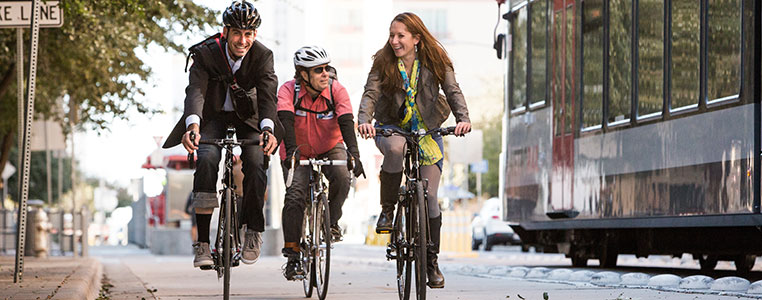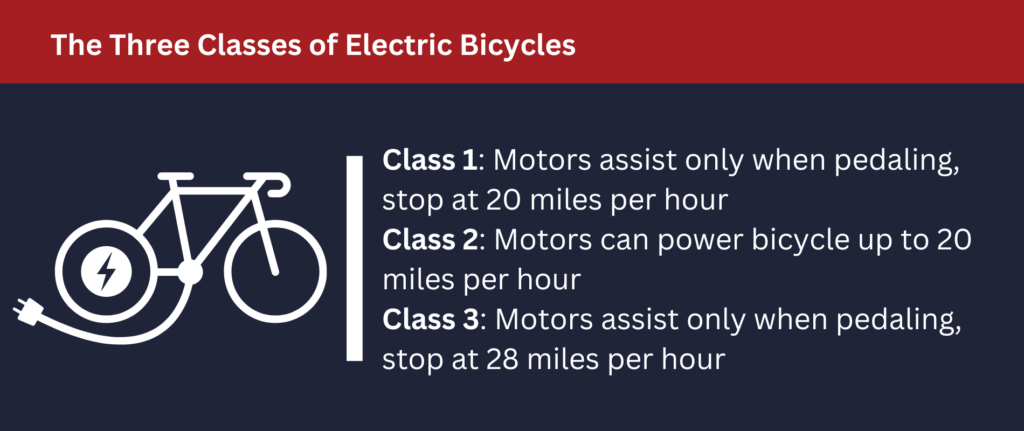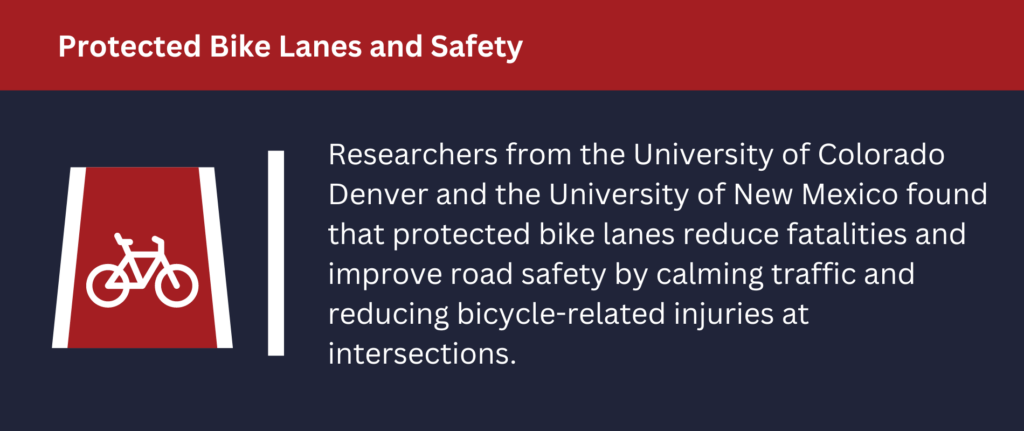
You may have recently noticed bike lanes in California which are physically separated by barriers from the rest of the road, like bike lanes featuring white pylons and bright neon squares which were recently set up along R Street in Fresno. These are known as protected bike lanes, which were made possible when AB 1193 was signed by California’s governor in 2014.
Protected bike lanes, also known as class IV bikeways, provide exclusive right-of-way for bicycle travel adjacent to roadways, protecting bicyclists from getting in accidents with vehicular traffic. Various forms of physical separation can be used to create a protected bike lane, such as on-street parking, inflexible physical barriers, flexible posts or grade separation. Only bicycles are allowed in these lanes.

Some, but not all electric bikes are allowed in protected bike lanes. AB 1096 established three classes of electric bicycles in California:
- Class 1 electric bicycles, which have motors that only provide assistance when the rider is pedaling. The motors stop providing assistance past 20 miles per hour;
- Class 2 electric bicycles, which have motors which can exclusively power the bicycle up to a speed of 20 miles per hour;
- Class 3 electric bicycles, which have motors that only provide assistance when the rider is pedaling. The motors stop providing assistance past 28 miles per hour.
Class 1 and class 2 electric bicycles are allowed in protected bike lanes in California. Class 3 electric bicycles are not.
Protected Bike Lane Statistics

A study published in 2019 involving researchers from the University of Colorado Denver and the University of New Mexico found that protected bike lanes lead to fewer fatalities and better road safety for all users of the road. The researchers found that added bicycle infrastructure such as protected bike lanes end up calming traffic around them, leading to slower traffic speeds and reduced fatalities.
Adding bike lanes, the researchers found, reduced fatal crash rates in Seattle (-60.6%), San Francisco (-49.3%), Denver (-40.3%) and Chicago (-38.2%).
A study published in 2013 found that protected bike lanes reduced bicycle-related injuries at intersections by about 75% compared to similar intersections without protected bike lanes.
The New York City Department of Transportation found in 2013 that protected bike lanes actually reduced pedestrian injury rates by 12 to 52 percent. The department also found in 2012 that a protected bike lane in 9th Avenue reduced all street users’ injuries by 56%, reduced cyclists’ injuries by 57%, and reduced pedestrian injuries by 29%.

